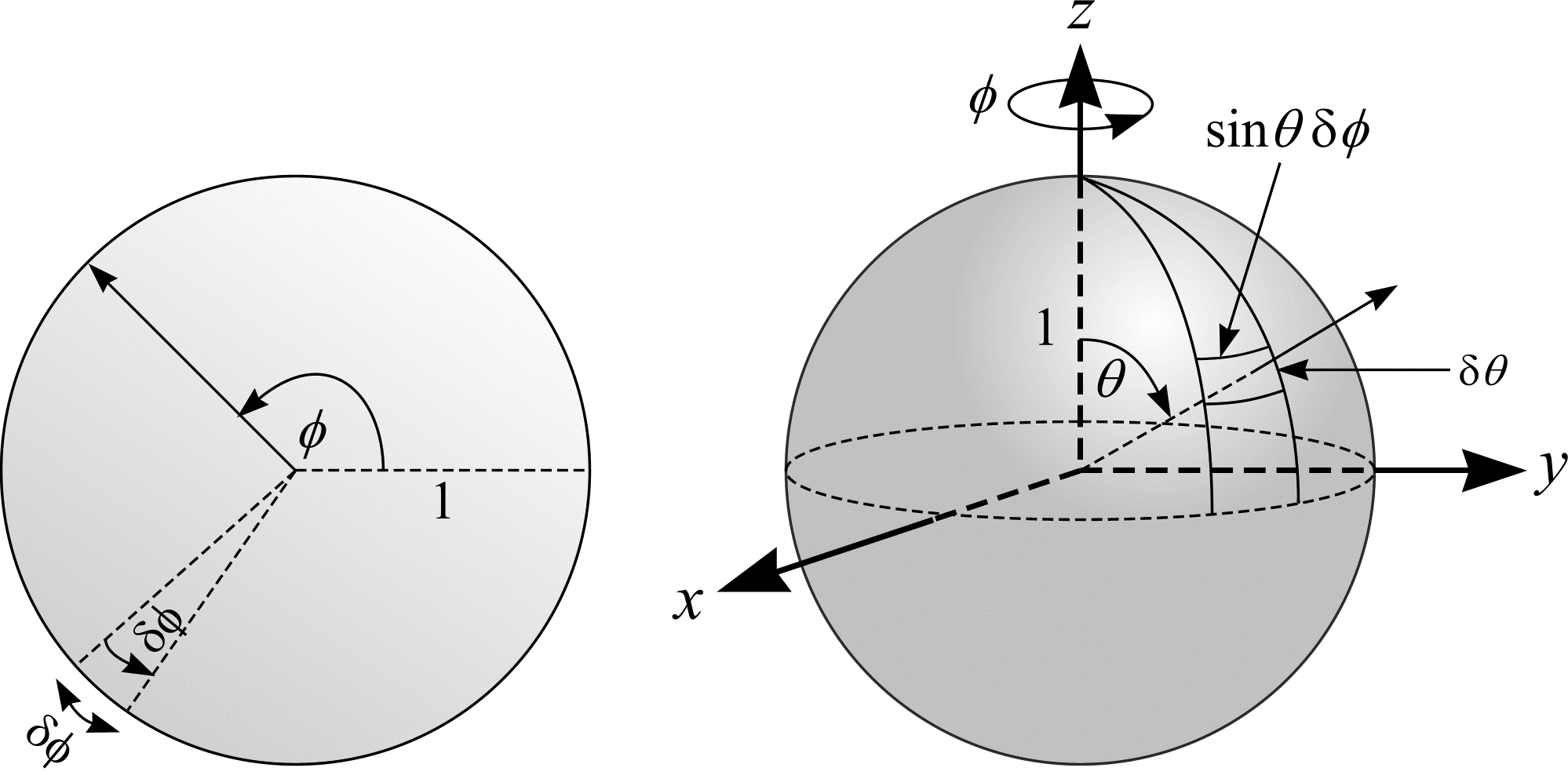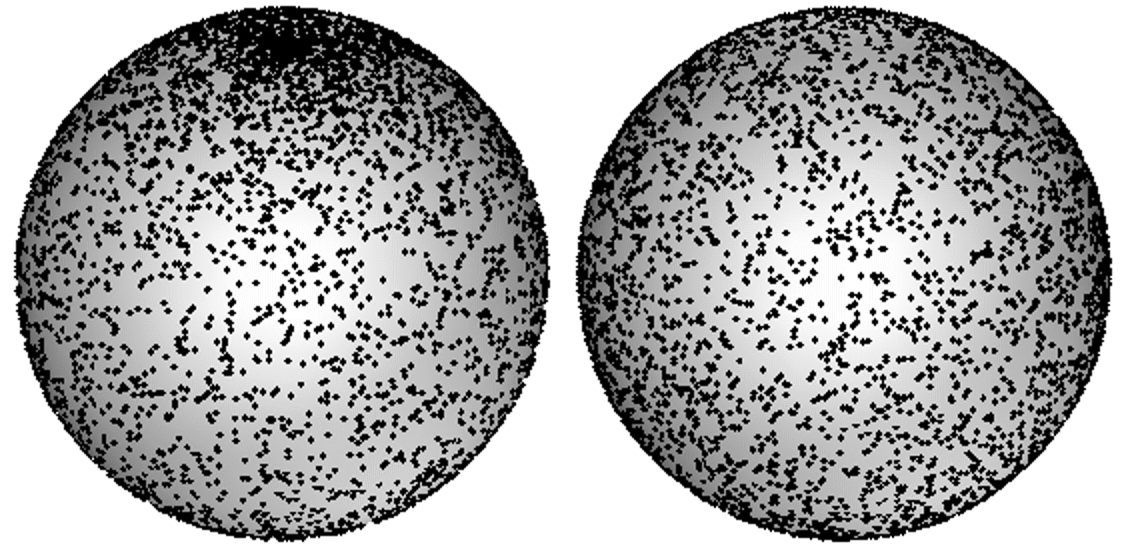Random position and orientation
An orientation in the plane can be represented by points on the boundary of a circle. An orientation is simply an angle \(\Phi \in [0, 2\pi)\). The orientation is said to be isotropic random (IR) if and only if the angle \(\Phi\) is equally likely, i.e. uniform random (UR), in the interval \([0, 2\pi)\) (written \(\Phi \in \mathrm{UR}[0, 2\pi))\). An equivalent statement is that the orientation, \(\Phi\), is IR if and only if the density function of \(\Phi\) is constant.
To determine the density function of \(\Phi\), consider an arc on the unit circle given by \(\{\Phi : \phi \le \Phi \le \phi + \delta\phi\}\). The arc, of length \(\delta\phi\), is shown in Figure 6(a). The probability of an orientation falling inside the arc is
Equations (7) and (23) imply the density function is \(1/2\pi\). Furthermore, the function is constant.
The idea can be extended to three dimensions. Orientations in \(\real^{3}\) can be represented by points on the surface of the unit sphere. Figure 6(b) shows how points on the unit sphere can be obtained by choosing \(\Phi \in [0, 2\pi)\) and \(\Theta \in [0, \pi)\). To determine an IR orientation, choose a point uniform randomly on the surface of the sphere (so that regions of equal area will have the same probability to contain the point). It does not suffice to choose \(\Phi\) and \(\Theta\) uniform randomly in the intervals \([0, 2\pi)\) and \([0, \pi)\) respectively. Figure 7(a) shows 10,000 orientations chosen this way. The orientations cluster about the north and south poles.

Figure 6: (a) An orientation in the plane (represented by the angle \(\phi\)). (b) An orientation in \(\real^{3}\) (represented by the angles \(\phi\) and \(\theta\)).
Consider a surface patch on the unit sphere given by \(\{(\Phi, \Theta) : \phi \le \Phi \le \phi + \delta\phi, \theta \le \Theta \le \theta + \delta\theta\}\). For \(\delta\phi\) and \(\delta\theta\) small, the patch approximates a rectangle with dimensions \(\sin(\theta)\delta\phi\) by \(\delta\theta\). Suppose \(\Phi\) and \(\Theta\) are chosen uniform randomly in the intervals \([0, 2\pi)\) and \([0, \pi)\) respectively. The probability of the chosen orientation falling inside the patch is
Equations (11) and (24) imply the joint density function of \(\Phi\) and \(\Theta\) is \(\sin(\theta)/4\pi\). To pick IR orientations the density function must remain constant. Clearly \(\mathbf{P}(\delta\theta) = \sin(\theta)\delta\theta\). Consider the sine-weighting or change of variable \(\theta = \arccos(1 - 2u)\), where \(u\) is uniform random in the interval \([0, 1)\). Differentiating,
$$ \mathrm{d}\theta = -\frac{1}{\sqrt{1 - u^{2}}}\mathrm{d}u $$
and \(\sin(\theta)\) becomes \(\sin(\arccos(1 - 2u)) = \sqrt{1 - u^{2}}\). Now \(\mathbf{P}(\delta\theta) = \sin(\theta)\delta\theta = -\delta u\). Figure 7(b) shows 10,000 IR orientations.
An object (such as a straight line or curve) in some domain \(D \subset \real^{2}\) is said to be Isotropic Uniform Random (IUR), if it is IR and has UR position within \(D\). The latter condition holds if a single identifiable point \(P\) on the object has UR position within \(D\). This is equivalent to asking that the coordinates of \(P\) be chosen so that regions of equal area have the same probability of containing \(P\). Similarly an object such as a plane in some domain \(D \subset \real^{3}\) is said to be IUR if it is IR and has UR position within \(D\).

Figure 7: 10,000 orientations chosen (a) non-isotropically and (b) isotropically.